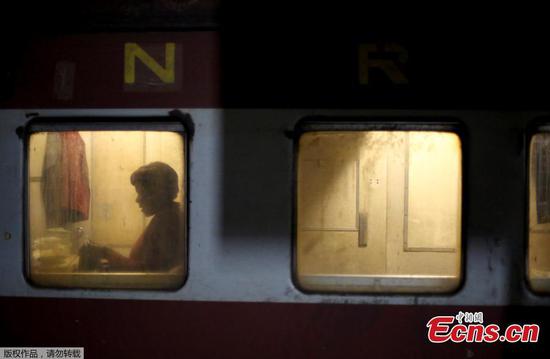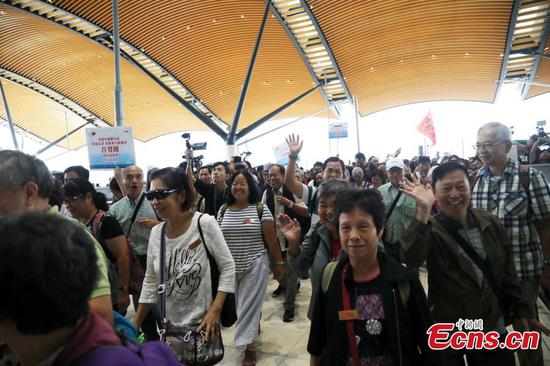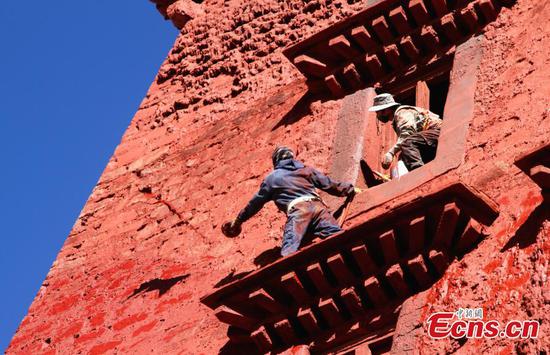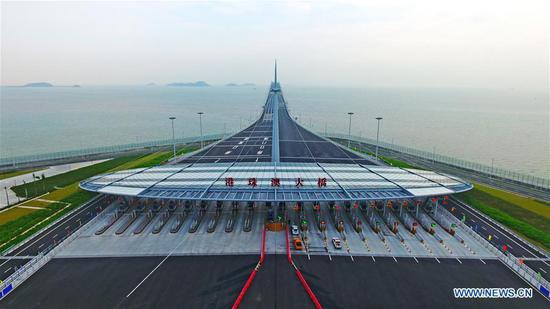New U.S. tariffs on 200 billion U.S. dollars of Chinese imports have caused an extra cost burden for American home builders and buyers, exacerbating an affordability crisis that has serious social and economic consequences.
The United States added 10-percent tariffs on 200 billion dollars worth of Chinese imports on Sept. 24. The list of the tariffs, on top of the 50 billion dollars of goods already taxed earlier this year, includes 10 billion dollars of goods used by the home building industry, according to the calculation of the U.S. National Association of Home Builders (NAHB).
The 10 percent levy represents a 1-billion-dollar tax increase on residential construction, the NAHB said in a report, noting a more gloomy tax hike up to 2.5 billion dollars for the industry when the tariff rate jumps to 25 percent on Jan. 1, 2019.
"Our builders began receiving notices of price increases from their suppliers in late September. The price increase has been commensurate with the level of tariffs," David Logan, director of Tax and Trade Policy Analysis at NAHB, told Xinhua on Wednesday.
The NAHB is a federation of more than 700 state and local associations, representing more than 140,000 members across the United States.
CHILL ALREADY FELT
Logan said it would take another month for the price effects to show up in the consumer price index and producer price index. But the chill has already seeped into the housing market.
"The impact is immediate," Michael Turner, owner of Classic Urban Homes, a Dallas-based custom home builder, told Xinhua. Following the tariffs, quoted prices from his suppliers for a 30-day period have risen 10 percent to 15 percent for everything ranging from counter-tops to tiles.
The type of house Turner's company builds used to cost about 750,000 to 1 million dollars. "A 10-percent increase on that base is a huge amount," he said.
More and more customers are postponing their home building plans, making do with what they currently have and hoping the market will cool off a bit, Turner said.
"Recently announced tariffs are adding to price pressures and preventing builders from delivering homes to working families," the Dallas Home Builders Association said in its October market update.
The new tariffs levied against China were not the first that boomeranged on the United States. Since last year, a medley of tariffs the United States imposed on foreign imports have ended up elevating its own home building cost.
The 20-percent tariffs on Canadian softwood lumber added 9,000 dollars to the cost of single-family homes in the United States, the NAHB said.
Though there has been no authoritative estimation of the impact of U.S. tariffs on steel and aluminum against major trading partners on the cost of multi-family homes and buildings, the consensus is the tariffs only add insult to wounds for the American housing industry.
Aside from rising construction costs, mortgage rates have also been climbing too quickly, forcing buyers to reach deeper into pockets and eroding affordability.
Data released by Freddie Mac on Oct. 18 showed the 30-year fixed mortgage rate average stood at 4.85 percent, after hitting 4.90 percent a week earlier -- the highest since mid-April 2011.
With another hike for the Federal Reserve interest rates on the cards this year, experts foresee the mortgage rates will remain stable at such a high level. The rate was 3.88 percent a year ago.
The factors of high mortgage rates and rising home prices have snowballed and cut into housing affordability in the United States, which reached a 10-year low in the second quarter of the year, according to the NAHB/Well Fargo Housing Opportunity Index.
Latest sales figure proves the case. The Commerce Department said Wednesday sales of newly-constructed homes in December plunged to 553,000, 5.5 percent lower than in August and the lowest since December 2016.
The stocks unanimously plummeted at the news, with Dow down 608 points, erasing all of its gains for 2018. The SPDR S&P Homebuilders ETF (XHB) dropped 3.5 percent.
Faris Saah, senior lecturer at Harvard University, told Xinhua the housing affordability crisis has serious social and economic repercussions. It reduces workers' mobility to seek better jobs in new regions, causes a slower rise and decline in homeownership rates, reduces access to wealth creation through homeownership leading to a drag on consumer spending.
FED SOUNDS ALARM
The Federal Reserve also sounded the alarm in its latest two meetings. In the minutes of its Aug. 1 monetary policy meeting, it recognized the possibility of "a significant weakening" in the housing sector as a "downside risk" for the broad economy.
In its Sept. 26 meeting minutes, it predicted real residential investment would decline further in the third quarter and new home starts would continue to drop.
"With America facing a housing affordability crisis, it is counterproductive to enact policies that will needlessly drive up the cost of housing," Randy Noel, chairman of the NAHB, said last month in a statement.
"We respectfully urge the administration to change course and work to resolve these trade disputes in a manner that won't harm American businesses and consumers," Noel said.
For now, Turner and his price-weary customers are caught in a fix amid the affordability crisis. Buyers are opting for a wait-and-see stance while Turner tries to convince them of the new reality.
"I try to tell them that there is little chance the building cost will be back down in, say, 60 or 90 days, and that the increased cost is the 'new normal'," he said.
The market, however, is seeing a "buyer fatigue," he said, with a sense of helplessness obvious in his tone.


















































